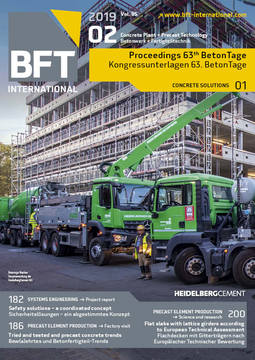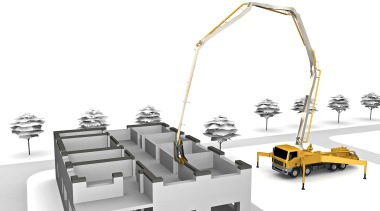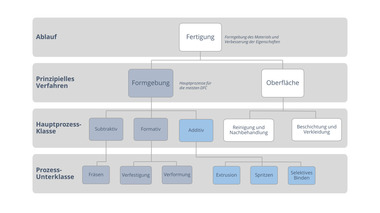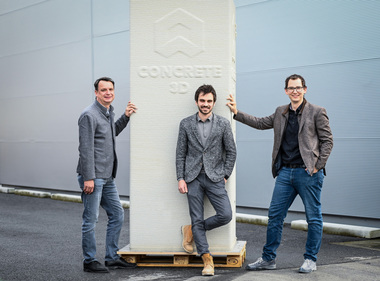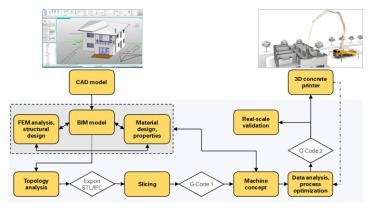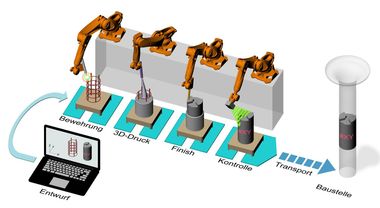3D concrete printing
There is a rapidly growing interest in digital construction with concrete. The same holds true for the associated expectations in respect to this promising technology [1, 2]. However, a number of obstacles remain to be overcome for transferring 3D concrete printing into construction practice. One of the major challenges lies in developing a practicable method for defining, setting and testing the required material properties of fresh and hardening concrete.
Designing the rheological properties of printable concrete is a very complex process that sometimes involves contradictory requirements resulting from the individual phases of the production process [3]:
Effortless conveying of the concrete to the printhead. On an industrial scale, this should usually be achieved by pumping, which is why fresh concrete pumpability must be ensured.
Easy material deposition through the printhead. At this stage, it is crucial to ensure a continuous flow of fresh concrete through the nozzle opening exactly at the specified extrusion rate (volume per unit of time) whilst minimizing energy consumption. This requirement is referred to as extrudability.
Early strength of the freshly deposited concrete so that it can resist the loads of subsequently deposited layers to ensure swift construction progress. After a minimum interval specified in the printing schedule, initially deposited filaments must no longer exhibit significant deformation as a result of being loaded by the deposition of new filaments. This ability of the fresh concrete to retain its shape under increasing load is referred to as buildability.
The figure illustrates the relevance of pumpability, extrudability, and buildability based on the example of the CONPrint3D technology developed at TU Dresden. Pertinent methods of characterizing the material in its fresh state must be rethought and redefined. New normative rules should be established in much the same way as during the transfer of self-compacting concrete into construction practice.

![Fig.: Illustration of the key properties of printable concrete based on the example of the CONPrint3D technology (basic drawings courtesy of Chair of Construction Machines, TU Dresden) [3]](https://www.bft-international.com/imgs/1/3/9/7/1/4/0/tok_f1773c149f311d7431a27868a42d92c1/w300_h200_x472_y528_5_4_Mechtcherine_Abb-b53202da9af16c44.jpeg)


